We have the pleasure of welcoming Dr. Miles Neale, author of Return with Elixir: Four Maps for the Soul’s Pilgrimage through Death and Rebirth, as our featured author this month. Buddhist psychotherapist Dr. Miles Neale’s book takes a deep dive into wisdom from mystical traditions and perennial philosophy on “dying before you die”, providing a roadmap for spiritual rebirth that reveals how to reframe life’s unrelenting challenges and transitions as opportunities for psychological growth. Miles shares his own hero’s journey of rebirth and offers readers his insights on transformation through a spiritual crisis and, ultimately, his creation of a more meaningful life. In his article, Miles explores the collective struggle and transition we are experiencing at an individual and societal level through the lens of Tibetan Buddhism, psychology, mythology, and precession of the equinoxes, as well as taking the reader on a journey through the ancient and sacred site of Borobudur.
Interact with Miles on our AoM Forum here.
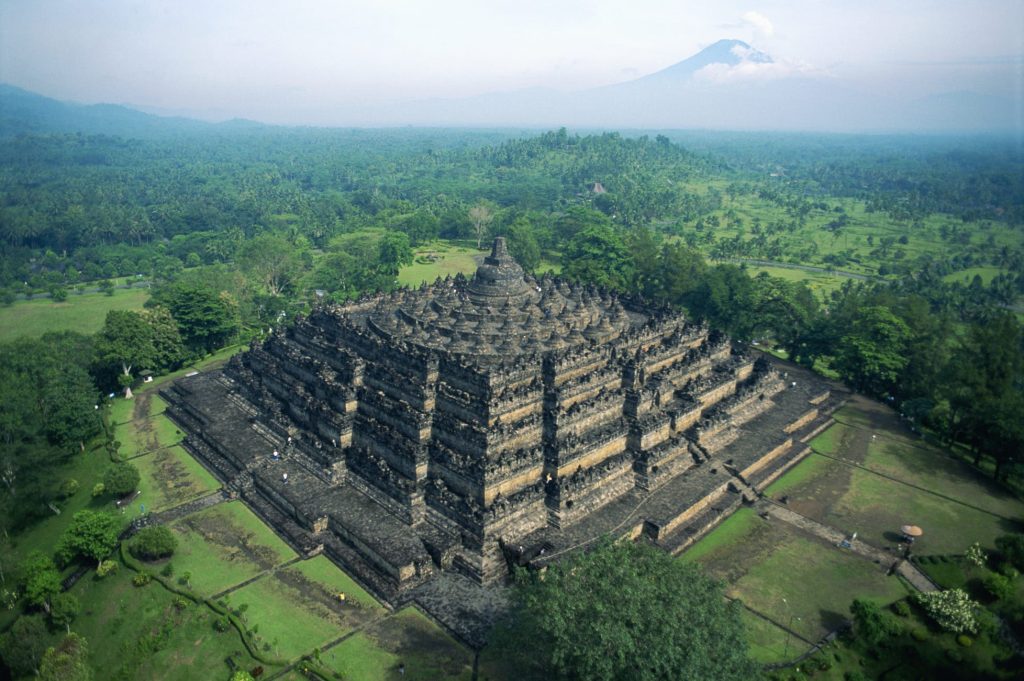
Borobudur, Java, Indonesia, photo Zaenulihsan91 (CCBYSA4.0)
The Great Reset
In the year leading up to the global pandemic, my receptivity to psychic phenomena heightened significantly – a reality that many of us are experiencing in this emerging era. One vivid dream featured a visitation from the Greek god of healing Asklepios, accompanied by a powerful urge to revive the holistic wellness centers of ancient Greece and Asia Minor that bore his name—the Asklepion. In another instance, I experienced vivid visions of circumambulating a stone mandala as my body simultaneously dissolved, undergoing the Tibetan death and rebirth process. A third example came through synchronicity when, in 2019, I became aware of the rare upcoming planetary conjunction of Saturn, Pluto, and Jupiter on January 12, 2020. Astrologer Maurice Fernandez1 described this alignment as ushering in a period of structural collapse (Saturn), the unveiling of disruptive shadow truths leading to societal death and rebirth (Pluto), and expanded consciousness (Jupiter). As we know now, this conjunction marked the global pandemic, a portal between two worlds.
Over the last 25 years of being a student and teacher of Tibetan Buddhism and clinical psychology, and most poignantly the last five years, while living, researching, and writing my book Return with Elixir, I followed a series of external signs revealed through astrology, prophecy, and mythology, alongside internal ones—visions, synchronicities, dreams, and intuitions arising from the collective unconscious—all calling me to embark on a transformative journey to integrate esoteric traditions and revive sacred megalithic sites of initiation.
Like many of you, I had been closely observing the co-emerging poly-crisis—economic instability, ecological devastation, government overreach, the mental health epidemic, and civil unrest—only to see these issues further inflamed during the pandemic lockdowns. In my attempt to sensemake this complex convergence, I sought the largest-scale lens to provide a coherent perspective. Cosmology and prophecy offered precisely that, delivering explanations rooted in ancestral wisdom and the science of the stars.
I discovered that currently, we may be experiencing three overlapping cosmic transitions.
- The Great Year Transition from Iron to Bronze Age
The first is a seismic epochal shift from the Iron Age to the Bronze Age (or from Kali Yuga to Dwapara Yuga in the Vedic system), representing a new 2,400-year phase within the larger, 24,000-year cycle called the Great Year. This cycle was known to astronomers of ancient Egypt, Greece, India, Tibet, Mesoamerica, and others. While the Mayan long-count calendar unnecessarily triggered mass hysteria that a cataclysm would end the world in December 2012, what it demarcated instead was an end of a cosmic phase and the beginning of another that all star-gazing cultures recognized as a feature of cyclic, rather than linear, time. A “great reset”, as it were.
While the precise date of this age transition within the Great Year is debated, Bibhu Dev Misra2 proposes it occurs on March 21, 2025, based on his extensive calculations. Importantly, Bibhu also correlated the 24,000-year Great Year cycle with the slightly longer 25,920-year precession of the equinoxes, accounting for the discrepancy between the two models and leaving little doubt that they represent the same celestial phenomenon, or what I call the pilgrimage of the stars. My research concurs with Walter Cruttenden34, and points to a slightly earlier transition to the Dwapara, around 1699 CE, co-emergent with the scientific revolution and discovery of electricity, as derived from the work of Sri Yukteswar in The Holy Science5.
Whether this transition began three centuries ago or is unfolding as we speak, the influence on collective consciousness and, therefore, society is already upon us. Phenomenologically, the results are the same: we are living within the swirling riptides of a profound archetypal energy shift that could account for the widespread institutional collapse and regeneration we witness daily. From banking to medicine, energy to agriculture, geopolitics to religion, the old guard is sunsetting and doubling down in the face of its demise while simultaneously, new saplings of innovation emerge to replace them. More importantly, understanding these transitions can empower us to align with them rather than futilely resist, like a swimmer battling an undercurrent.

[The Great Year, incorporating the Yuga Cycle and Zodiac, rotating counterclockwise according to esoteric symbolism revealed in Return with Elixir. © Dr. Miles Neale]
- Zodiacal Transition from Piscean to Aquarian Age
Where Cruttenden and I may differ is that I propose we are simultaneously undergoing a second transition related to the zodiacal shift from the Piscean Age to the Aquarian Age, marking a new 2,160-year phase governed by a unique set of constellation-based archetypes, including a shift towards the decentralization of power, humanitarianism, revolution, rapid technological innovation, a focus on information and energy, and increased spiritual awakening. The convergence of the ascending Dwapara Yuga and the Aquarian Age naturally share some archetypal similarities. Most notably, both signify a time of rapid technological advancement that importantly outpaces our moral and spiritual development—a phenomenon at the heart of the challenges we face today. In this period, we are poised to attain god-like power and advance technology, initially without the necessary moral foundation to wield it; a truth that should be evident as we stand in awe before the rising specter of Artificial Intelligence coupled with nuclear capability. Swiss psychiatrist Carl Jung wrote in Aion that “…Aquarius…will no longer make it possible to write off evil as mere privation of good; its real existence will have to be recognized.” 6 He believed in the coming age we couldn’t become whole without confronting and integrating darkness in our psyche.
- Great Mutation Transition from Earth to Air Sign
The third transition, known as the Great Mutation, began December 21, 2020, when Jupiter and Saturn conjoined in Aquarius, shifting from earth to air signs for the next two centuries. This may explain today’s dizzying flood of data, mental overwhelm, and sense of groundlessness, since air rules thought, communication, and rapid innovation. People are increasingly abandoning traditional anchors—corporate jobs, home ownership—to embrace nomadic freedom and seek experiences over possessions. Examples include wireless tech like Starlink surpassing physical infrastructure, Bitcoin replacing fiat currency, and ventures like SpaceX pushing interstellar boundaries.
All three cosmic shifts—ascending Dwapara Yuga, Aquarian Age, and the Great Mutation—converge at a pivotal moment, echoing prophecies from around the world including the Lament of Hermes7, the Seven Fires of the Anishinaabe8, White Buffalo Calf Woman of the Lakota9, the Indo-Tibetan Buddhist Shambala prophesy10, and Saptapalon11 of Indonesia, the Eagle and the Condor12, and many others. Together, they concur we have entered a civilizational dark age, lost our souls, and now face a moral reckoning that could end in destruction or rebirth. Yet ancient wisdom insists crisis can be our catalyst, transforming terror into compassion, and heralding a return to a metaphoric golden age through the alchemy of initiation.
Solve et Coagula
These cosmic influences do not only affect the collective but also exert distinctive effects on individuals, shaped by their unique circumstances, astrological birth charts, karma, and psychological predispositions. Over the last decade, I have experienced profound panic attacks and a destabilizing betrayal, and I, too, underwent a prolonged psychological death and renewal. During this time, I learned about the medieval alchemical process of solve et coagula—to dissolve and reconstitute. This Latin motto underlies all esoteric traditions and became the central loom upon which I wove the tapestry of my Elixir book, interlacing various esoteric threads that emerged from the depths of my unconscious. As I traced patterns across four disciplines—cosmology, mythology, psychology, and alchemy—surprising correlations revealed themselves, and I translated their cyclical stages into mandala-like maps, stacking them one atop the other like the coordinated dials of the Antikythera mechanism13 discovered in 1901.
In cosmology, the precession of the equinoxes governs the Yuga cycles, each passing through a descent into materialism and spiritual darkness, a transitional phase, and an ascent into a golden age of expanded consciousness. Joseph Campbell’s monomyth follows a parallel trajectory, moving from departure to initiation and culminating in the hero’s return to serve the community. Carl Jung’s individuation likewise begins with rigid ego-identification, plunges into the shadow to confront repressed trauma, and breaks through into the collective unconscious to discover the universal archetype of the Self. In Tibetan Buddhist alchemy, one rehearses death by dissolving the mind-body complex, enters the liminal bardo of clear-light consciousness, and ultimately envisions a rebirth as an enlightened emanation driven by altruism.
All four models affirm that transformation remains incomplete until the boon—or elixir—earned by grappling with dragons, death, or chaos restores order to society. My book’s title, Return with Elixir, echoes Campbell’s final hero’s journey stage. Along my passage of breaking down to break through, these esoteric maps and practices converged into a manual for rebirth—perfectly timed with our present epoch shift.
The Meaning Crisis-Opportunity
The pandemic of 2020 was a harbinger, the most poignant tremor in a cascading series of tectonic shifts that brought civilization to a staggering halt. Yet even before it, something deep within us sensed a growing dissonance, a spiral of disconnection—a golden thread stolen from the fabric of life. For five centuries, humanity has marched to the drumbeat of reason and materialism, stripping the cosmos—once a vibrant tapestry of myth and meaning—down to cold mechanics, industrial assembly lines, and data overload.
As the myths of Prometheus and Pandora’s box warn, our technological achievements inevitably bear unforeseen consequences. Today, we drift untethered from the sacred dimension of life, cast into what cosmologist Rick Tarnas calls a “disenchanted world.” 14 In our pursuit of material advancement, we severed the life-affirming cord of spiritual sustenance, leaving us malnourished in the wasteland of modernity. Psychologist John Vervaeke describes the consequences as a “meaning crisis,” 15 a collective starvation of symbolic, mythopoetic, and embodied dimensions. Absent the soul as our guiding compass, society grows morally bankrupt and symptomatic, stemming from what I once termed a “sickness of paradigm.” 16 This trauma of separation from spirit that results from our adopting the materialist paradigm during the European Enlightenment has left us fragmented, apathetic, narcissistic, and nihilistic. The microcosm reflects the macrocosm: our inner sickness manifests in cultural fragmentation, societal dysfunction, and ecological collapse.
We have reached a global tipping point. Esoteric and spiritual lineages throughout history have taught that our suffering world is, at its root, a projection of collective mental distortions. Confronting the poly-crisis demands more than external remedies—it requires, as Jung observed, a spiritual reckoning: the confrontation and integration of our own shadow. Depictions from Dante’s Inferno in illuminated medieval manuscripts, Anubis weighing hearts in Egyptian tomb paintings, and the bardo beings described in the Tibetan Book of the Dead all allude to our current threshold between civilizational death and rebirth. Rather than punishment, it is a moral accounting and ritual purification, preparing us to reclaim the integrity and wisdom needed for an eventual return to a golden age of high civilization.
Pilgrimage: Journey Through the Underworld
For me, pilgrimage emerged as a new therapeutic intervention for our “sickness of paradigm” and a natural replacement for my office-based clinical work. I sold my home and possessions, left my friends and network in bustling Manhattan after twenty-five years, and followed a winding path to Homer’s sacred island of Ithaka in Greece, eventually settling with my wife and two young sons on the tantric island of Bali. The signs were rarely straightforward. They formed a meandering breadcrumb trail through a dim labyrinth of hardship, including the loss of financial security, professional status, and personal comfort. Ultimately, I experienced the dissolution of my identity itself—panic attacks, public humiliation, and a devastating betrayal—all forcing me to confront the terrifying minotaur of my psyche.
But as I recount in Elixir, this journey through the underworld yielded treasures that could only be earned by facing trials head-on. Trial and treasure always come together. The dark night of the soul is co-emergent with the light of a new day. This principle became the central message of my book, acting as a counterbalance warning against the wellness industry’s and New Age movement’s embrace of quick fixes, biohacks, and breakthroughs—exemplified by the popularity of abundance-seeking laws of attraction founded in toxic positivity17. Too often, the promise is to ascend to the mountaintop or reach the light without the necessary front-end preparation, descent and adventitious struggle with darkness, and crucial back-end integration that make gradual initiations unsexy and unpopular, yet truly transformative.
As I write in Elixir, “Every sacred journey asks us to die to be reborn, to go through the dark night to find the new dawn, to be so thoroughly consumed by the scorching self-immolating fire of our worst-case fears, that nothing remains but our authentic voice.” 18 On the other side of such ordeals—whether sexual abuse, divorce, bankruptcy, illness, or a loved one’s sudden loss—if we apply the alchemical method correctly, we emerge not with grandiosity, but with genuine humility. The return isn’t marked by dramatic proclamations but by quiet confidence, a deep inner knowing that needs no external validation, and a commitment to serving others through simple, compassionate acts often performed without recognition.
In the aftermath of my ordeal, what I lost in home and security, I found in freedom. What I lost in income, I gained in invaluable time with my wife and children. What I lost in professional identity, I discovered in a deeper calling. In the liminal space of utter invisibility, I confronted the restless insecurity that had long fueled my need for validation. For the first time, I faced and embraced my irrelevance—and in doing so, began to integrate those parts of me that had felt inadequate. It wasn’t a fleeting retreat into darkness; it lasted years, and as blazing iron hammered on an anvil, I was steadily softened, reshaped, and molded anew. It remains a work in progress.
My role as a therapist now involves guiding inner journeys into the psyche’s shadowlands and outer pilgrimages to sacred sites. With my clients, I move beyond the logical left brain into the intuitive right, venturing into the body and unconscious—like Persephone into the underworld or Jonah into the whale—to confront the shadow. We awaken trauma from its dormancy, restoring it to wholeness through love and light. Darkness and light meet in the mandala of the therapeutic alliance. I shifted my practice to lead groups on ancient trails to sacred destinations worldwide, where we honor nature, re-engage in ceremony, rediscover prayer, embody philosophy, deepen meditation, and nurture community. Reviving the Asklepion is my moon shot; one day, we will rebuild holistic centers of natural healing, dream incubation, sound visualization, and drama catharsis.
The Borobudur Mandala
In 2023, at the culmination of my book journey, I led a group of pilgrims to Borobudur, a towering, enigmatic, 1,200-year-old masterpiece. Recently described in The New York Times as the “center of the universe,” 19 Borobudur is a colossal pyramid of nearly 2 million volcanic stone blocks, covering 55,000 cubic meters, rising 113 feet, and spanning 400 feet at its base. A monument from a forgotten civilization, nestled in Java’s emerald landscape and flanked by active volcanoes, its true purpose remains shrouded in mystery. Yet, clarity is beginning to dawn.
To the casual observer, Borobudur is the world’s largest Buddhist monument. To a Jungian, it is a mandala, a universal archetype integrating opposites—masculine and feminine, light and dark. Through esoteric, tantric eyes, it is the celestial palace of a deity. But for those who move beyond passive observation into ritual participation, it becomes far more: a cosmic clock synchronizing sky and earth, an initiatory site reenacting the journey from suffering to liberation, and possibly, a high-frequency technology broadcasting a signal of hope in our time of upheaval.
Borobudur thrived under the ninth-century Sailendra dynasty before the pralaya, a period of cataclysm marked by earthquakes, invasions, and collapse. After 200 years of use, the jungle reclaimed it, leaving it abandoned until its rediscovery in the early 19th century. Walking through Borobudur’s labyrinthine corridors, its 2,672 bas-relief panels unfold like an ancient cinematic reel, telling the Buddha’s odyssey, prolific teachings, and universal myths encoded with meaning. But Borobudur is more than intricate architecture, exquisite art, and sacred numerology. Its circumambulations are a training, an embodied path to the Buddha’s awakening, as though piloting a virtual reality flight simulator designed for enlightenment.
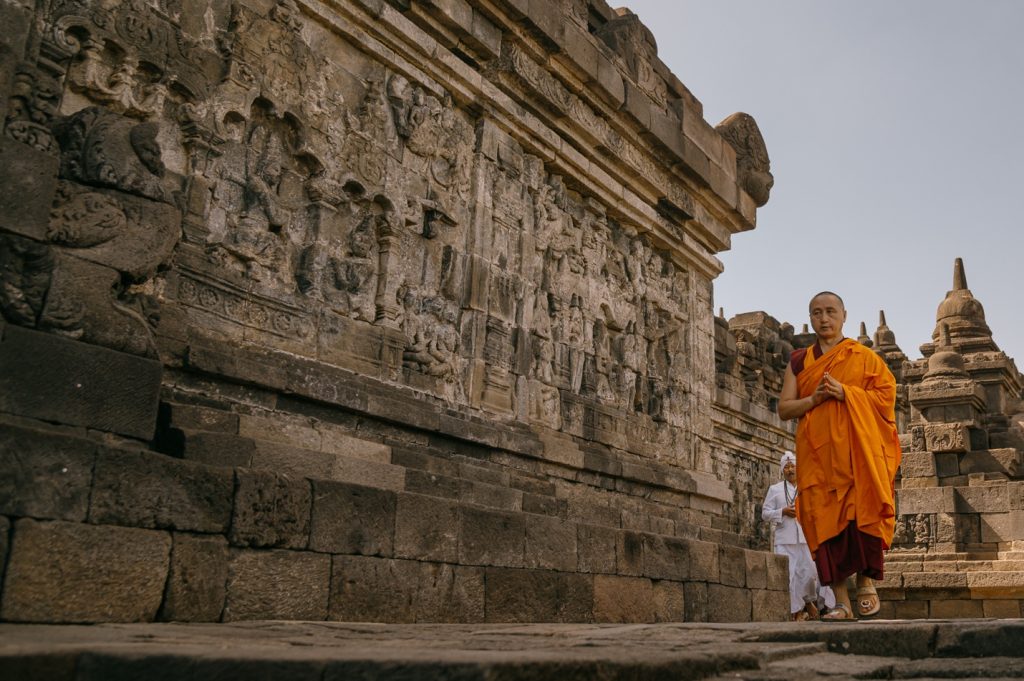
Circumambulation led by Tenzin Zopa and Mangku Jitho past the 2,672 base-reliefs, Borobudur, 2023, photo courtesy of Sejiva.id, used with permission
The temple contains 1,537 stupas (reliquaries) and 504 Buddha statues, 432 of which are positioned along the lower tiers, while 72 encircle the summit. These statues are grouped into the Five Dhyani Buddha families, which correspond to the transmutation of the five elements and five toxic emotions—delusion, attachment, anger, pride, and envy—into the pure qualities of a Buddha’s wisdom, compassion, and altruistic skill. Audaciously, the Borobudur mandala is an alchemical crucible for transmuting the elements of a compulsive human being into an enlightened altruist.
From above, Borobudur resembles an awe-inspiring timekeeper, a Swiss chronograph of cosmic proportions. Its interlocking “dials” and complex mathematical design track the span of a single human life evolving from misery to liberation and perhaps the distinctive epochs within the vast cosmic cycle. In essence, it is an ancient time machine, guiding pilgrims from earth to sky, from unconscious to supreme awakening, from dark to golden age.
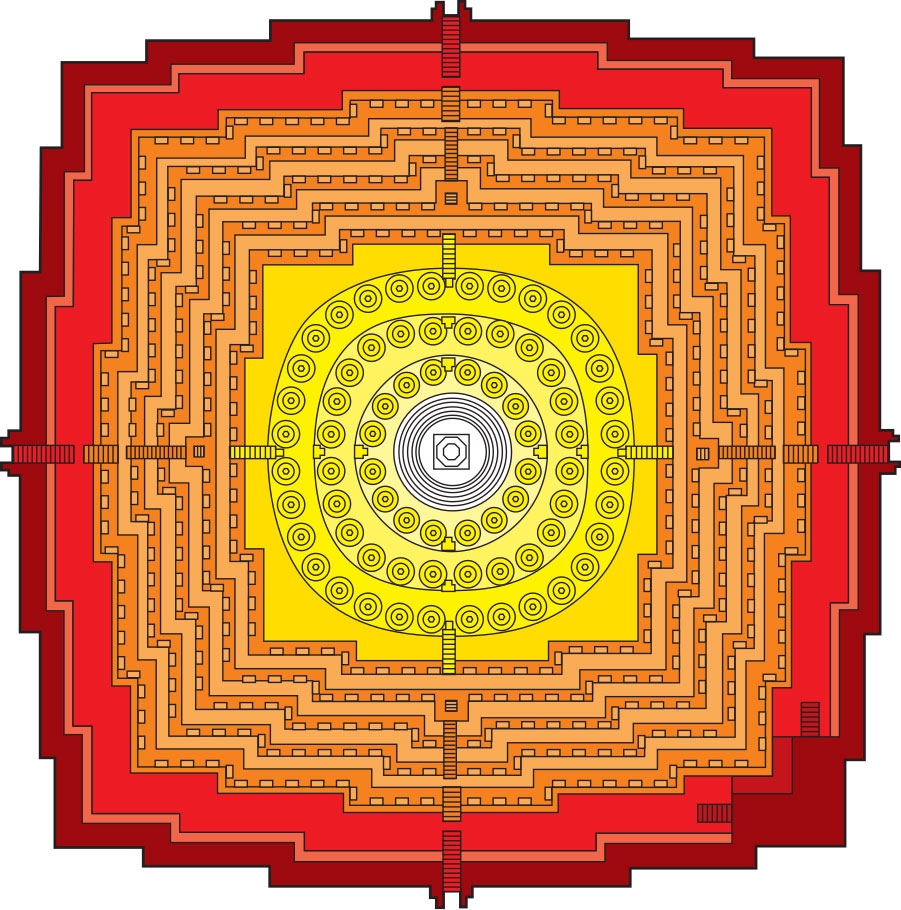
[Borobudur Temple plan from above, Java Island, Indonesia [Image by Gunawan Kartapranata (CCBYSA3.0)]. See photo, 20]
The precise dimensions, number of statues, stupas, and relief panels at Borobudur are very likely no accident. Scholars have posited various hypotheses regarding its design. Some suggest21 that Borobudur, along with the nearby temples of Mendut and Pawon, forms a straight triadic alignment that follows the zenith passage of the sun, or so-called sun path. Researchers22 confirm that Borobudur’s four gates align precisely with the four cardinal directions, while other scholars note that “observations at Borobudur Temple during the vernal equinox showed that the shadow of the main stupa forms a distinct pattern, falling on specific surrounding stupas, suggesting its potential use as a time marker within ancient agricultural and ritual systems.”23 Borobudur preeminent scholar John Miksic24 suggests that the primary function as a ritual site was tied to the lunar calendar, particularly Vesak Day, which marks the Buddha’s birth, enlightenment, and death during the May full moon.
Giorgio de Santillana and Hertha von Dechend25, argue that the number 72 is a “heartbeat number” corresponding to the long cycle of the precession of the equinoxes—a 25,920-year cosmic cycle. One degree of this 360-degree cycle takes 72 years to complete. According to Graham Hancock, this formula is embedded in the temple’s design, cited in his Magicians of the Gods26, the 72 main stupas at Borobudur’s summit are perhaps an encoded reference to this ancient precessional cycle. If this hypothesis is correct, the numbers 504 (the total Buddhas) and 2,672 (the relief panels), the monument’s nine levels, and the precise physical dimensions, astrocartography, and locations of the megalithic structure likely all carry similar numeric significance, representing subdivisions of time, related to the cycles of the cosmos, and other esoteric Buddhist phenomenon.
The Shiva-Buddha Archetype: Reunion of Opposites and the Borobudur Chatra
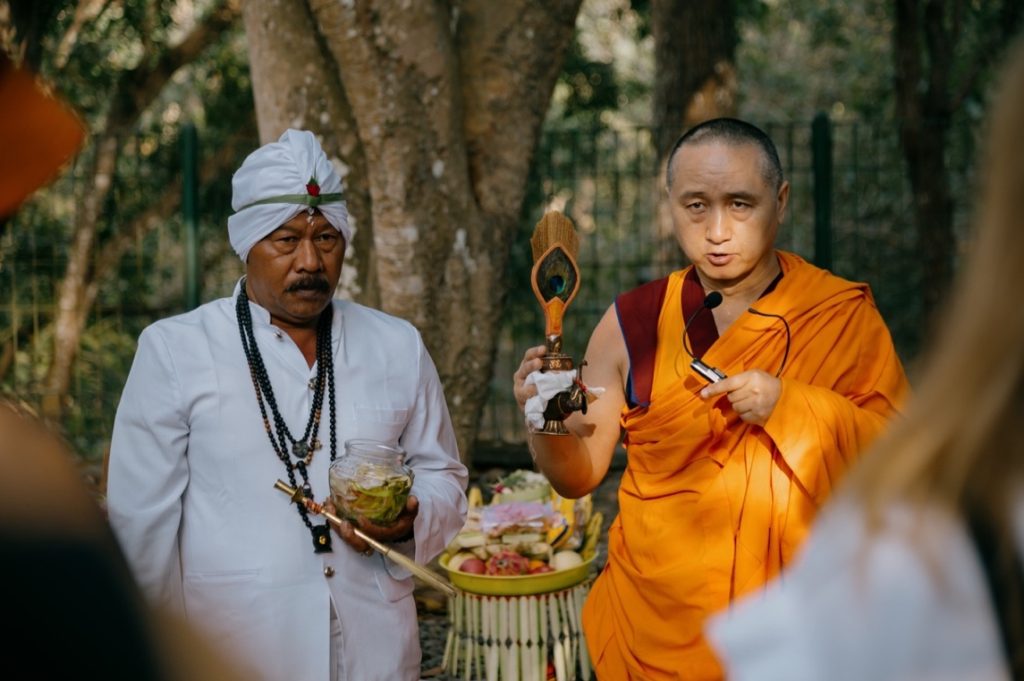
[Mongku Jitho and Geshe Tenzin Zopa, embodiments of the Shiva-Buddha archetype, Borobudur, 2023, photo courtesy of Sejiva.id, used with permission]
The Shiva-Buddha tantra was a syncretic religion in Indonesia that flourished between the 9th and 15th centuries, fusing esoteric Shaivism with Vajrayana Buddhism. Ceremonies venerating both deities were likely performed at sites like Borobudur before this fusion dissolved in the 16th century with the decline of the Majapahit dynasty and the spread of Islam in Java. As Shaivism retreated to Bali and Buddhism faded, this ritualistic tradition fell into obscurity for five centuries, coinciding with the rise of scientific materialism. Like megalithic sites buried the world over, the deeper archetypal impulse of Shiva-Buddha endured in the collective unconscious, awaiting rediscovery. Somehow, it found me through visionary experiences detailed in Elixir.
Shiva represents dissolution—death, destruction, and the end of epochs—while Buddha signifies awakening, the creation of altruistic civilizations, and the expansion of human consciousness. Shiva liberates us from suffering, while Buddha returns us to the world with compassion. Both movements are needed to form a complete cycle.
As we transition out of the Piscean Age, the Aquarian Age ushers in a new paradigm transcending duality. The Cupbearer, Ganymede, pouring celestial nectar—an elixir—from above down to Earth heralds a shift toward nonduality. Heaven merges with Earth, and ordinary humans awaken their inner divinity. This decentralized age redistributes power and accountability, reanimating a spiritual impulse in an overly materialistic world. The Shiva-Buddha archetype in my journey underscored the importance of integrating opposites—left and right brain, reason and intuition, science and spirituality, transcendence and embodiment.
Over time, I saw these archetypes weaving into a mythopoetic narrative. I was—we are—called to make a healing pilgrimage to the sacred center of our own metaphoric mandala, where solve et coagula unfolds—a path of dying to be reborn—culminating in the reunion of Shiva and Buddha, human and divine, restoring lost harmony while aligning with the constellations above. Before my pilgrimage to Borobudur, a refrain echoed in my soul: “Go back, in order to go forward.” Something deep within called me to reclaim what was lost to rebuild something new. I envisioned reviving the Shiva-Buddha ceremony atop the world’s largest mandala, Borobudur, with my Tibetan teacher, Tenzin Zopa, leading the ritual. But in my vision, he wasn’t alone—beside him stood a Javanese master, who for a time remained a mystery until he, too, emerged.
Through a series of uncanny synchronicities, this vision materialized during my pilgrimage in 2023. I found the local Javanese tantric master Mangku Jitho, and together with Tenzin Zopa, we orchestrated the first Shiva-Buddha ceremony atop Borobudur in over five centuries, corresponding with the Saptapalon prophecy. The ceremony had a singular purpose: to energetically restore the chatra, or crown, long missing from atop the central dome. From a symbolic rather than archaeological perspective, this missing chatra had left the world’s largest mandala energetically inert. Its vibrational broadcast of peace had fallen silent—an uncanny reflection of our times—urging us to reactivate its spiritual antenna through visualization, mantric vibration, and reintegration of dualities. This event is captured in the final chapter of Elixir and the documentary The Missing Peace27, directed by Matthew Freidell and freely available on YouTube. I invite you to enter the mandala, participate in this timeless ceremony, and envision a more harmonious world already complete.
At the summit of the mandala, mythological Mount Meru—the cosmic center—pilgrims and tantric masters gathered, encircled by 72 stupas, symbolizing our direct participation in the cosmic dance of the Great Year. This meeting at the sacred center mediated energies above and below, within and without, reuniting Shiva (death) and Buddha (awakening) after centuries of separation. This was no coincidence but part of a deeper archetypal impulse—an urgent call to regenerate what has been fragmented, to reanimate the lost soul of a disenchanted world, and to return with the elixir for the benefit of future generations.
The symbol at Borobudur calls us in, not to be admired by armchair philosophers or observant archaeologists but to be actively engaged—by yogis, mystics, psychonauts, and seekers—ready to expand consciousness and take the next bold step of collective maturity at this great crossroads in history.
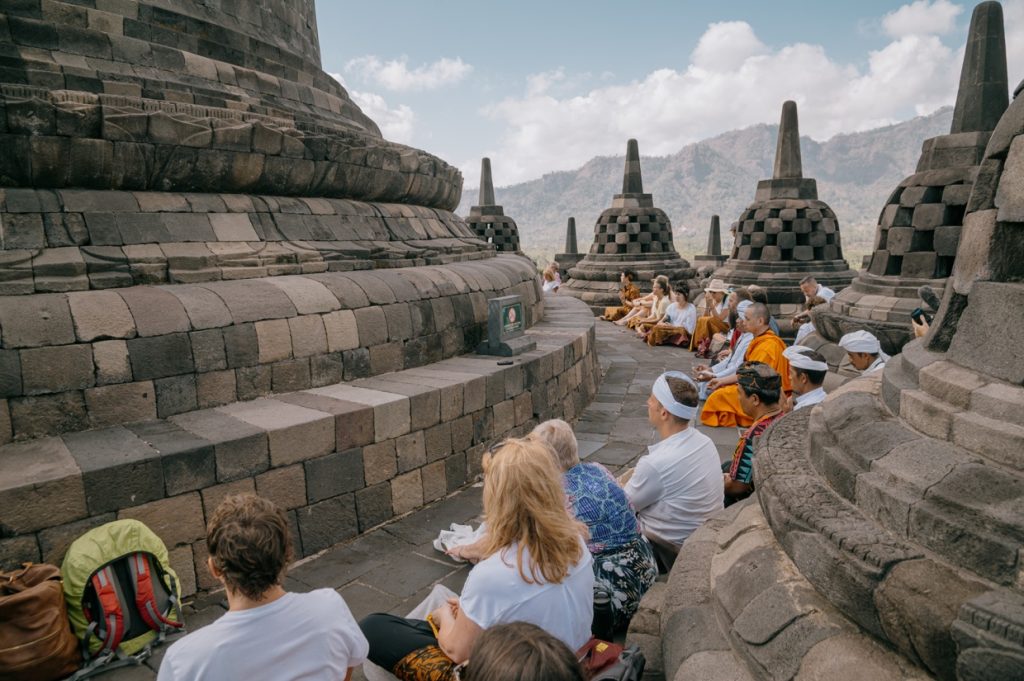
[Group ceremony atop Borobudur surrounded by 72 stupas, photo courtesy of Sejiva.id, used with permission]
Reviving Sacred Sites of Initiation
What if sites like Borobudur—and other ancient megalithic wonders around the world—are not dead relics of bygone eras but initiatory theaters of transformation, calling out to be reactivated during modern times as we face a convergence of crises? What if Angkor Wat in Siem Reap, Chichen Itza’s Temple of Kukulcan, the Great Pyramid of Giza, the Asklepion at Epidaurus, and Gobekli Tepe near Urfa are all beckoning us to put down our cameras as tourists and enter as pilgrims ripe for initiation, gathering again for ceremony, reviving sacred sites, applying ancient sciences and inner technologies, gazing at the stars, and reclaiming our long-lost soul through meditation, prayer, and psychedelics?
We may be awakening from what Graham Hancock rightly calls our collective amnesia, but this awakening isn’t simply about uncovering forgotten knowledge belonging to lost civilizations predating the ice age. It is about deliberately and authentically re-engaging with that wisdom and radically altering our collective consciousness through ceremony, ritual, psychedelic sacrament, prayer, and meditation—reviving the mythic and cosmological frameworks that once guided entire cultures through epochs of profound transformation. What if the ancient inner science and soul tech designed by high civilizations to elevate human consciousness to the stature of the divine are not lost forever but awaiting our rediscovery as we approach the stroke of midnight on the cosmic clock?
What mysteries remain encrypted within the hidden chambers of the Great Pyramid at Giza and beneath Gunung Padang in Java, or still buried under the lush Amazon rainforest, or remain undeciphered in the geometric symbolism of Chartres Cathedral, or within Stonehenge’s celestial alignments? More importantly, what secrets lie buried within our psyches—concealed in the shadowy underworld that so few dare to notice or explore—whispering to us through coded dreams and visions? Will we listen? Perhaps a psychopomp or spirit guide will emerge with a map and compass, perhaps with a psychedelic brew or guided meditation, ushering us into the foreboding labyrinth of mind to traverse the limitless landscape of being—for an opportunity to redeem, remember, and reclaim what has been lost.
As more of these sacred sites are unearthed, revealing their nature as crucibles of initiation, I hope we transcend mere intellect and detached observation to become active co-creators—conscious architects—embodying the profound wisdom and moral integrity needed to guide our planet into its next chapter of an infinite, celestial cycle. Let us reframe the raging, self-made fires of our poly-crisis not as punishment but as purification and preparation to hasten our awakening—a collective rite of passage to resensitize us to our interdependence, reawaken our innate divinity, reconnect us with our soul through the great mysteries, and reactivate these megalithic sanctuaries for their timeless spiritual purpose, in this very hour.

[Group preparations with Tenzin Zopa under the main stupa with its missing crown (chatra), Borobudur, 2023, photo courtesy of Sejiva.id, used with permission]
Bibliography
Benton-Banai, Edward. The Mishomis Book: The Voice of the Ojibway. Hayward, WI: Indian Country Communications, 1979.
Brown, Joseph Epes. The Sacred Pipe: Black Elk’s Account of the Seven Rites of the Oglala Sioux. Norman, OK: University of Oklahoma Press, 1953.
Copenhaver, Brian P. Hermetica: The Greek Corpus Hermeticum and the Latin Asclepius in a New English Translation. Cambridge: Cambridge University Press, 1992.
Cruttenden, Walter. Lost Star of Myth and Time. Pittsburgh: St. Lynn’s Press, 2006.
Cruttenden, Walter. “Precession and the Cycles of Time.” Graham Hancock Official Website, accessed February 2, 2025. https://grahamhancock.com/cruttendenw4/.
Dalai Lama, Tenzin Gyatso. The Kalachakra Tantra: Rite of Initiation. Translated by Jeffrey Hopkins. Boston: Wisdom Publications, 1999.
Fernandez, Maurice. “The Saturn-Pluto Conjunction and the Transits for the Year 2020.” Accessed February 2, 2025. https://mauricefernandez.com/the-saturn-pluto-conjunction-and-the-transits-for-the-year-2020/#:~:text=The%20Jupiter–Saturn%20Conjunction%20at,we%20will%20all%20respond%20to.
Freeth, Tony, David Higgon, Adam Dacanalis, et al. “A Model of the Cosmos in the Ancient Greek Antikythera Mechanism.” Scientific Reports 11 (2021): 5821. https://doi.org/10.1038/s41598-021-84310-w.
Freidell, Matthew. “The Missing Peace.” YouTube video, n.d. Accessed March 12, 2025. https://www.youtube.com/watch?v=7z43khsWeYg&list=PL74S0dFvsammqUABLIOmyN2jEhQB_vZA3.
Hancock, Graham. Magicians of the Gods: The Forgotten Wisdom of Earth’s Lost Civilization. New York: Thomas Dunne Books, 2015.
Hariawang, I. I., and F. M. Simatupang. “Orientation of Borobudur’s East Gate Measured Against the Sunrise Position During the Vernal Equinox.” In Proceedings of the 11th Asian-Pacific Regional IAU Meeting (2011): 37–42. Retrieved from Semantic Scholar.
Hariawang, I. I., F. M. Simatupang, and E. S. Mumpuni. “Astroarchaeology at the Borobudur Temple.” In Proceedings of the 11th Asian-Pacific Regional IAU Meeting. Institut Teknologi Bandung and National Institute of Aeronautics and Space (LAPAN), 2011.
Hassan, Steven. “Why ‘The Law of Attraction’ Is Problematic and Dangerous.” Psychology Today, accessed February 2, 2025. https://www.psychologytoday.com/us/blog/freedom-of-mind/202302/why-the-law-of-attraction-is-problematic-and-dangerous.
Jung, Carl G. Aion: Researches into the Phenomenology of the Self. Translated by R. F. C. Hull. Princeton: Princeton University Press, 1959.
Miksic, J. N. Borobudur: Golden Tales of the Buddhas. Tuttle Publishing, 2016.
Misra, Bibhu Dev. “The Death and Resurrection of the Phoenix.” Graham Hancock Official Website, accessed February 2, 2025. https://grahamhancock.com/dmisrab17/.
Neale, Miles. Gradual Awakening: The Tibetan Buddhist Path of Becoming Fully Human. Boulder: Sounds True, 2018.
Neale, Miles. Return with Elixir. Rochester, VT: Inner Traditions, 2025.
New York Times. “Yogyakarta, Indonesia.” January 20, 2025. https://www.nytimes.com/2025/01/20/travel/yogyakarta-indonesia.html.
Reddit. “Borobudur Temple from Above, Java Island Indonesia.” r/ArchitecturePorn, March 2025. https://www.reddit.com/r/ArchitecturePorn/comments/fwku5z/borobudur_temple_from_above_java_island_indonesia/.
Ricklefs, M. C. Mystic Synthesis in Java: A History of Islamization from the Fourteenth to the Early Nineteenth Centuries. Norwalk, CT: EastBridge, 2006.
Santillana, Giorgio de, and Hertha von Dechend. Hamlet’s Mill: An Essay on Myth and the Frame of Time. Boston: Gambit, 1969.
Sparavigna, A. C. “The Zenith Passage of the Sun at Candi Borobudur.” Philica, 2017. Retrieved from ResearchGate.
Sri Yukteswar. The Holy Science. Los Angeles: Self-Realization Fellowship, 1949.
Sweeney, T. “Eagle and Condor.” In The Encyclopedia of Religion and Nature, edited by Bron Taylor, 539–540. London: Continuum International, 2005.
Tarnas, Richard. Cosmos and Psyche: Intimations of a New World View. New York: Viking, 2006.
Vervaeke, John. Awakening from the Meaning Crisis. Lecture series, 2019. Available at https://www.youtube.com/playlist?list=PLND1JCRq8Vuh3fAFGvN2R7s6VpdFdvSb7.
Wikimedia Commons. “Borobudur, Magelang.” Wikimedia Commons, accessed [no date given]. https://commons.wikimedia.org/wiki/File:Borobudur_Magelang.jpg.
1 Maurice Fernandez, “The Saturn-Pluto Conjunction and the Transits for the Year 2020,” accessed February 2, 2025, https://mauricefernandez.com/the-saturn-pluto-conjunction-and-the-transits-for-the-year-2020/#:~:text=The%20Jupiter–Saturn%20Conjunction%20at,we%20will%20all%20respond%20to.
2 Bibhu Dev Misra, “The Death and Resurrection of the Phoenix,” Graham Hancock Official Website, accessed February 2, 2025, https://grahamhancock.com/dmisrab17/.
3 Walter Cruttenden, “Precession and the Cycles of Time,” Graham Hancock Official Website, accessed February 2, 2025, https://grahamhancock.com/cruttendenw4/.
4 Walter Cruttenden, Lost Star of Myth and Time (Pittsburgh: St. Lynn’s Press, 2006).
5 Sri Yukteswar, The Holy Science (Los Angeles: Self-Realization Fellowship, 1949).
6 Jung, Carl G. Aion: Researches into the Phenomenology of the Self. Translated by R.F.C. Hull, Princeton University Press, 1959.
7 Copenhaver, Brian P. Hermetica: The Greek Corpus Hermeticum and the Latin Asclepius in a New English Translation.Cambridge: Cambridge University Press, 1992.
8 Benton-Banai, Edward. The Mishomis Book: The Voice of the Ojibway. Hayward, WI: Indian Country Communications, 1979.
9 Brown, Joseph Epes. The Sacred Pipe: Black Elk’s Account of the Seven Rites of the Oglala Sioux. Norman, OK: University of Oklahoma Press, 1953.
10 Dalai Lama, Tenzin Gyatso. The Kalachakra Tantra: Rite of Initiation. Translated by Jeffrey Hopkins. Boston: Wisdom Publications, 1999.
11 Ricklefs, M. C. Mystic Synthesis in Java: A History of Islamization from the Fourteenth to the Early Nineteenth Centuries. Norwalk, CT: EastBridge, 2006.
12 Sweeney, T. “Eagle and Condor.” In The Encyclopedia of Religion and Nature, edited by Bron Taylor, 539–540. London: Continuum International, 2005.
13 Freeth, Tony, David Higgon, Adam Dacanalis, et al. 2021.
“A Model of the Cosmos in the Ancient Greek Antikythera Mechanism.”
Scientific Reports 11 (5821). https://doi.org/10.1038/s41598-021-84310-w.
14 Richard Tarnas, Cosmos and Psyche: Intimations of a New World View (New York: Viking, 2006), 32.
15 John Vervaeke, Awakening from the Meaning Crisis (lecture series, 2019), available at https://www.youtube.com/playlist?list=PLND1JCRq8Vuh3fAFGvN2R7s6VpdFdvSb7.
16 Miles Neale, Gradual Awakening: The Tibetan Buddhist Path of Becoming Fully Human (Boulder: Sounds True, 2018).
17 Steven Hassan, “Why ‘The Law of Attraction’ Is Problematic and Dangerous,” Psychology Today, accessed February 2, 2025, https://www.psychologytoday.com/us/blog/freedom-of-mind/202302/why-the-law-of-attraction-is-problematic-and-dangerous.
18 Miles Neale, Return with Elixir (Rochester, VT: Inner Traditions, 2025)
19 https://www.nytimes.com/2025/01/20/travel/yogyakarta-indonesia.html
20 https://www.reddit.com/r/ArchitecturePorn/comments/fwku5z/borobudur_temple_from_above_java_island_indones
21 Sparavigna, A. C. (2017). The Zenith Passage of the Sun at Candi Borobudur. Philica. Retrieved from ResearchGate.
22 Hariawang, I. I., & Simatupang, F. M. (2011). Orientation of Borobudur’s East Gate Measured Against the Sunrise Position During the Vernal Equinox. In Nakamura et al. Proceedings of the 11th Asian-Pacific Regional IAU Meeting, 37-42. Retrieved from Semantic Scholar.
23 Hariawang, I. I., Simatupang, F. M., & Mumpuni, E. S. (2011). Astroarchaeology at the Borobudur Temple. Proceedings of the 11th Asian-Pacific Regional IAU Meeting. Institut Teknologi Bandung and National Institute of Aeronautics and Space (LAPAN).
24 Miksic, J. N. (2016). Borobudur: Golden Tales of the Buddhas. Tuttle Publishing.
25 Giorgio de Santillana and Hertha von Dechend, Hamlet’s Mill: An Essay on Myth and the Frame of Time (Boston: Gambit, 1969).
26 Graham Hancock, Magicians of the Gods: The Forgotten Wisdom of Earth’s Lost Civilization (New York: Thomas Dunne Books, 2015).
27 Freidell, Matthew. “The Missing Peace.” YouTube video, n.d. Accessed March 12, 2025. https://www.youtube.com/watch?v=7z43khsWeYg&list=PL74S0dFvsammqUABLIOmyN2jEhQB_vZA3.






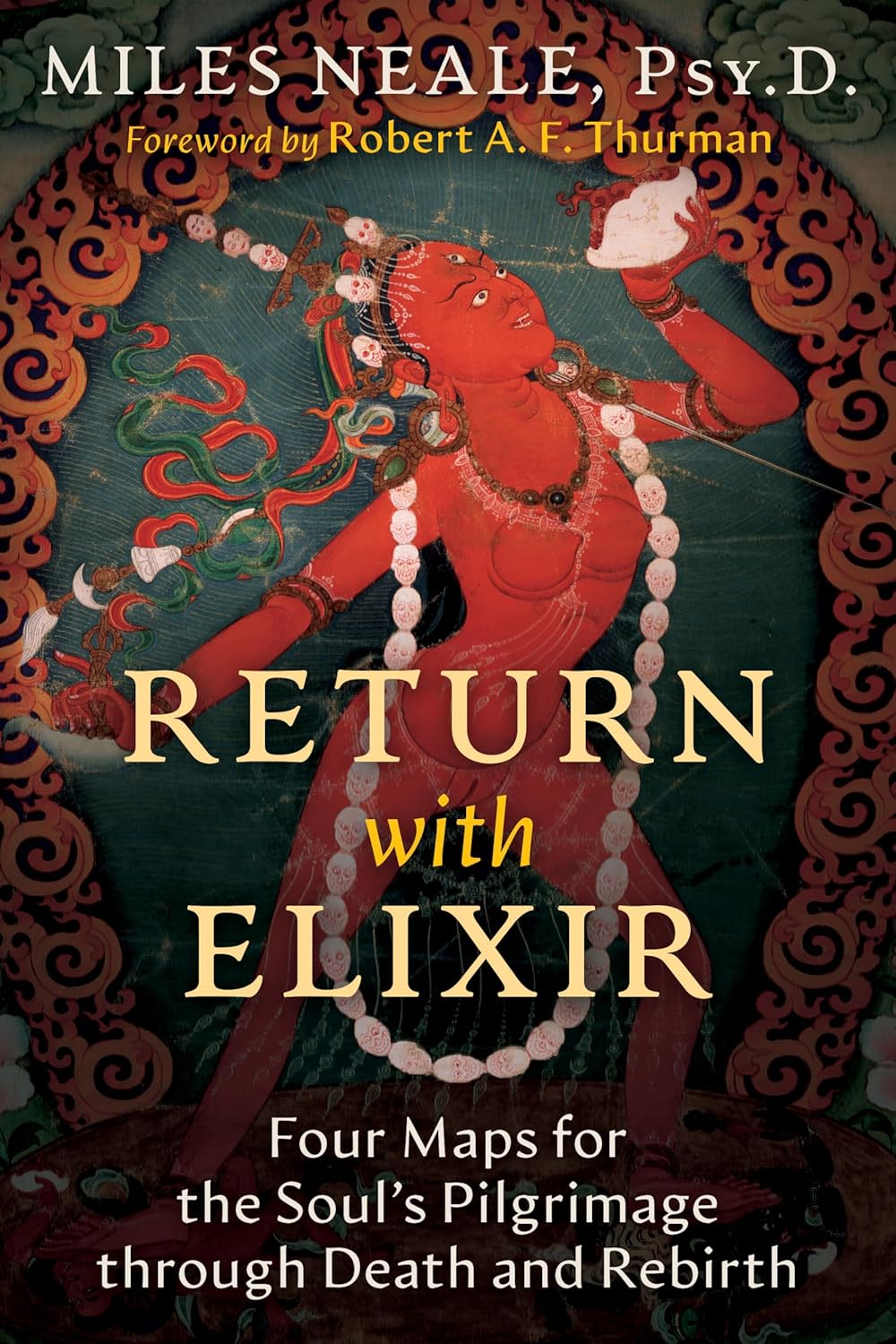
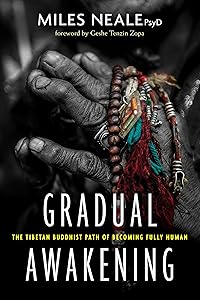
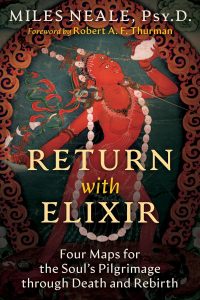
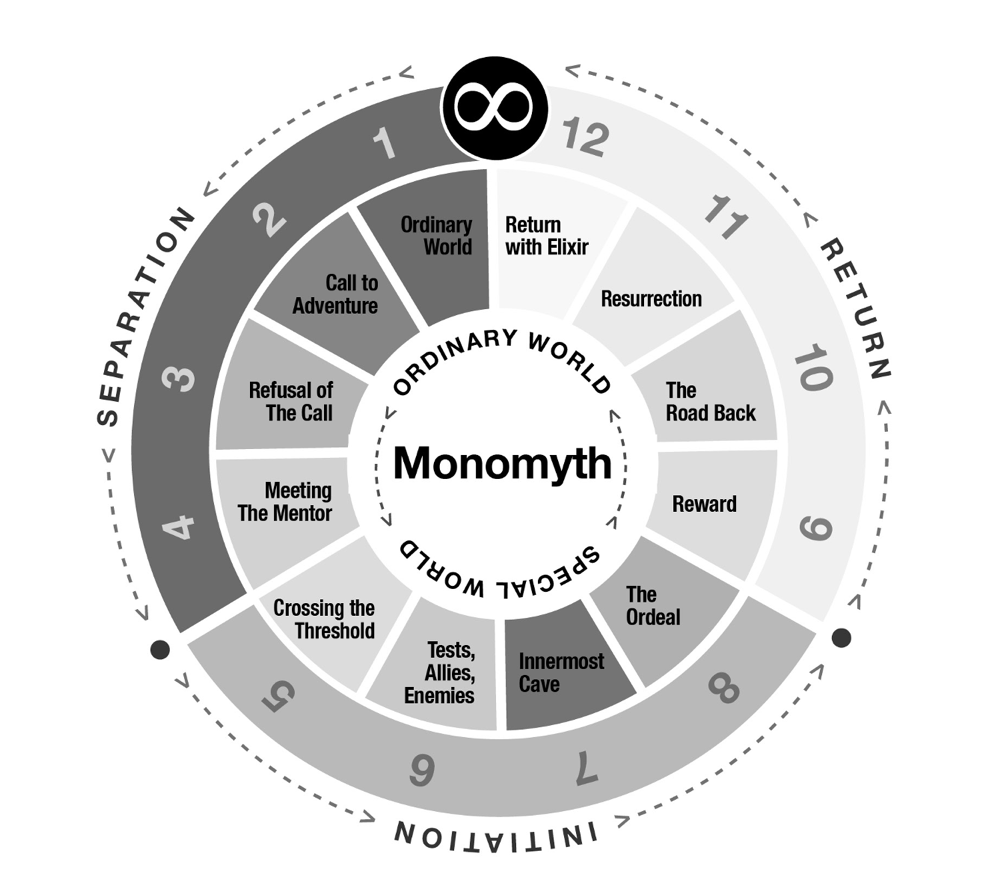
They should scan the ground beneath Borobudur.